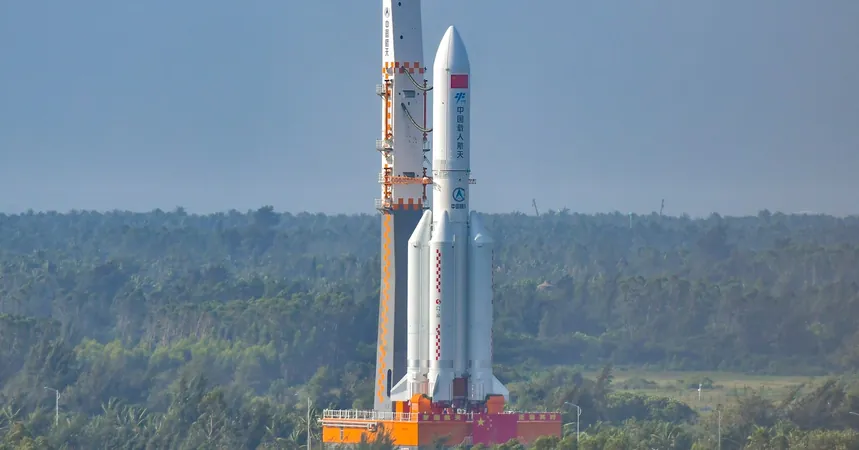
China's Long March 9 Rocket: A Bold Leap Towards Space Dominance and an Echo of SpaceX’s Starship
2024-11-05
Author: Jia
A Familiar Design
Initially, the Long March 9 was a traditional expendable rocket, but in a noteworthy pivot influenced by SpaceX's successful reusable rocket systems, it has transitioned into a configuration featuring a reusable first stage. This new iteration, showcased at a major airshow in Zhuhai, features a first stage powered by 30 YF-215 engines, which utilize methane and liquid oxygen, achieving a thrust of around 200 tons. For comparison, SpaceX's Starship first stage boasts 33 Raptor engines with a thrust exceeding 280 tons.
Moreover, the upper stage of the Long March 9 resembles Starship’s second stage, complete with similarly positioned control flaps. China plans to conduct the inaugural flight of this rocket in 2033, marking a strategic entry into the reusable rocket era.
Keeping Up with Innovation
China's space industry isn’t the only one in the race toward reusability; recent announcements from private companies, such as the startup Cosmoleap, indicate a broader trend within the country’s aerospace sector to adopt and adapt successful methodologies from international counterparts. Cosmoleap aims to develop its own fully reusable "Leap" rocket, emulating SpaceX's innovative "catch-with-chopsticks" recovery method first seen during Starship's flight tests.
As China refines its designs and operational plans, it’s clear that it is no stranger to emulating successful space programs. The landscape is navigating a blend of inspiration and innovation, with China effectively learning from SpaceX’s trailblazing advancements while hoping to carve out its competitive edge.
The Race for Lunar Dominance
Both the U.S. and China are entrenched in what can be described as a second space race, focusing on establishing footholds on the Moon, particularly around its south pole, where water ice could be invaluable for sustained human presence. China’s Long March 10 rocket will serve initial lunar missions, but the Long March 9 is set to play a pivotal role in more ambitious lunar operations, essential for long-term space exploration and settlement aspirations.
It’s crucial to note that the ultimate victor in this race won’t simply be the first to land astronauts on the Moon. The real achievement will belong to the nation that successfully develops a fully reusable super heavy-lift rocket and establishes a comprehensive program leveraging this technology. Currently, with Starship’s ongoing testing and developments, the U.S. maintains a lead. However, as the latest modifications to the Long March 9 indicate, China is acutely aware of where the finish line lies and is sprinting toward it.
Conclusion
With these ambitious plans, China's Long March 9 signifies a profound shift in the global space race dynamics. The unprecedented focus on reusability paired with innovative design means China's aspirations in space are being taken very seriously. As we observe this unfolding narrative, one fact remains clear: the future of space exploration will likely hinge on who can effectively integrate cutting-edge technologies to create sustainable access to the stars. The competition is heating up, and the ultimate winner remains to be seen. Buckle up!




 Brasil (PT)
Brasil (PT)
 Canada (EN)
Canada (EN)
 Chile (ES)
Chile (ES)
 Česko (CS)
Česko (CS)
 대한민국 (KO)
대한민국 (KO)
 España (ES)
España (ES)
 France (FR)
France (FR)
 Hong Kong (EN)
Hong Kong (EN)
 Italia (IT)
Italia (IT)
 日本 (JA)
日本 (JA)
 Magyarország (HU)
Magyarország (HU)
 Norge (NO)
Norge (NO)
 Polska (PL)
Polska (PL)
 Schweiz (DE)
Schweiz (DE)
 Singapore (EN)
Singapore (EN)
 Sverige (SV)
Sverige (SV)
 Suomi (FI)
Suomi (FI)
 Türkiye (TR)
Türkiye (TR)
 الإمارات العربية المتحدة (AR)
الإمارات العربية المتحدة (AR)